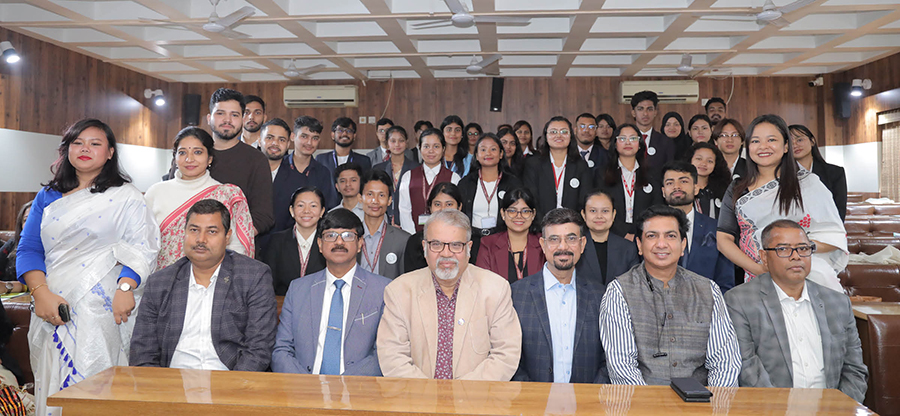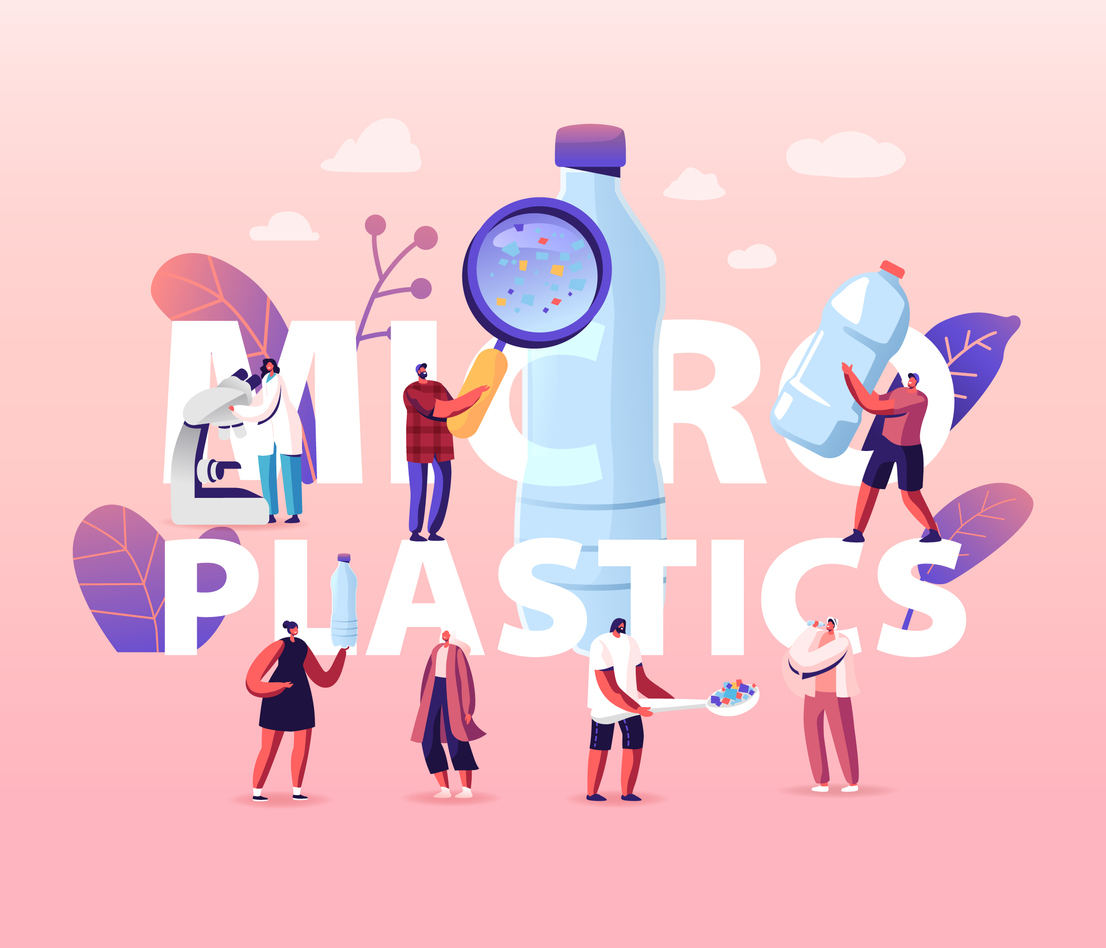Microplastic: A Silent Environmental Poison
By Euni Gogoi, Master Degree Student, Department of Ecology and Environmental Science, Assam University, Silchar, India; Mausam Kumar Paul, PhD, Senior Project Manager (EIA), CPC Environment Solution Private Limited, Guwahati, India; Animekh Hazarika, PhD Researcher, Department of Ecology and Environmental Science, Assam University, Silchar, India
What are microplastics?
Microscopic plastics originate from the fragmentation of large plastic litter and have diameters of less than 5 mm. These can be classified into primary and secondary. Primary microplastics are plastics produced in micro size; microbeads, found in toothpaste, soap, facial cleansers, shower gel, etc., are potential sources of primary microplastics. Secondary microplastics are the predominant form, originating from the fragmentation of plastic debris floating in aquatic bodies due to prolonged exposure to ultraviolet (UV) light or physical disintegration.
Microplastics in the environment
Humans release about 4.8 to 12.8 million tons of microplastics into the atmosphere every year, which further disseminate into various ecosystems. In the environment, microplastics can be transported through atmospheric or aquatic currents depending upon their weight and density. Rainfall, surface runoff, and ocean circulation are possible routes for the transfer of microplastics from land to water. Vice versa, they can also travel from water to land due to ocean circulation. Lighter and smaller microplastics can be carried away by the wind to remote areas such as glacier zones and high mountains. While lighter microplastics can be relocated across the land surface by the wind, denser microplastics might accumulate or get buried in the soil. Heavy rainfall and surface runoff from agricultural lands and urban areas can transport microplastics to surface waters. Airborne microplastics, consisting of light fibers from clothes, landfills, and waste incineration, can be transported over long distances to remote areas and deposited through atmospheric fallout.

Microplastics in agricultural soil of southern Assam, India (Photo by Euni Gogoi)
Crisis at the crossroads: consequences on humans and other living organisms
In recent years, there has been increasing environmental concern about microplastics due to their severe environmental impacts on both aquatic and terrestrial life and ecosystems.
Aquatic life and ecosystems
Microplastics are considered to be emerging contaminants because of their toxic effects on aquatic life. Due to their small size, these can be readily consumed by fishes, aquatic invertebrates, coastal birds, and other fauna. The impacts of microplastics on the health of aquatic organisms include a reduction in growth, dysfunction of the reproductive system and influence on egg hatching, which result in physical, chemical, and biological harm. They can also cause physical damage to the gastrointestinal tract of aquatic organisms, and lead to their death. Thus, microplastics can affect the mortality rate of such organisms.
Terrestrial life and ecosystems
Microplastics can act as carriers of toxic environmental contaminants such as persistent organic pollutants (POPs). POPs are present in wastewater effluents, urban runoffs, and leachates from landfills. Typical POPs found in agricultural soil include substances like polycyclic aromatic hydrocarbons (PAHs), polychlorinated biphenyls (PCBs), as well as various pesticides and herbicides. Microplastics have the capacity to soak up and transmit these pollutants, and thus, create a potential hazard to the soil ecosystem. Microplastic accumulation in soil leads to the inhibition in growth and reproduction, damage to the gut lining, increase in mortality rate, disruption of enzyme activities, and decreased immune responses in organisms present in the soil. Microplastics also have detrimental effects on plants.
Microplastics inside our body!
Microplastics have been found to be present in all parts of the human lungs, maternal and fetal placental tissues, breast milk, and human blood. Interestingly, a group of researchers detected nine types of microplastics in patients undergoing cardiac surgery, with the maximum diameter of microplastics being 184 μm.
Inhalation and ingestion are the two routes through which microscopic plastics enter human bodies. According to a Reuters Infographic, humans ingest about five grams of plastic weekly. Microplastics accumulate in the bodies of marine organisms and enter human bodies when people consume seafood or drink contaminated water, and eventually get absorbed into the bloodstream. Microplastics can enter our lungs while breathing and result in respiratory deformations. Once in contact with the epithelial linings in the lungs or intestine, microplastics can cause physical, chemical, and microbiological toxicity, which could also act cumulatively. Several studies on rodents indicate the potential of inhaled or ingested microplastics to cause a variety of biological effects, including physical toxicity, leading to antioxidant deficiency, secretion of cell signaling proteins, cellular damage, inflammatory and immune reactions, DNA damage, as well as neurotoxic and metabolic effects. Scientists are still investigating the long-term impacts of microplastics on human health.
Are we doing enough to manage our own waste?
The answer is “NO.”
What is the way forward?
Self-realization and responsibility towards our waste are crucial to fight plastic disasters. Management of microplastics is a complex challenge that requires effort from individuals, communities, industries and government to reduce their generation and minimize their impact on the environment and human beings. Here are some suggestions for addressing the problem:
Reduce plastic use: Minimize plastic waste consumption by using recyclable items instead of single-use plastic.
Proper disposal: Dispose of non-recyclable plastics in a way that prevents them from remaining in the environment.
Support research: The government should initiate research support for the development of microplastic removal technology from surface water, drinking water, soil, etc.
Awareness generation: Raise awareness about the sources and consequences of microplastics.
Use of water filters: Use filters capable of removing microplastics from drinking water as well as install and maintain wastewater treatment systems that can remove microplastics.
International collaboration: Promote international collaboration in the field of research, policy-making, development of Artificial Intelligence, etc., to address the global nature of microplastic pollution.
In conclusion, the proliferation of microplastics in our environment poses a significant threat to both ecosystems and human health. These minute particles, originating from various sources, have far-reaching consequences. The future of our planet and the well-being of living organisms, including ourselves, depend on our ability to address the microplastic issue with urgency and determination.
Acknowledgement
The authors are thankful to Dr. Arun Jyoti Nath, Associate Professor, Department of Ecology and Environmental Science, Assam University Silchar for his valuable suggestions and support.











